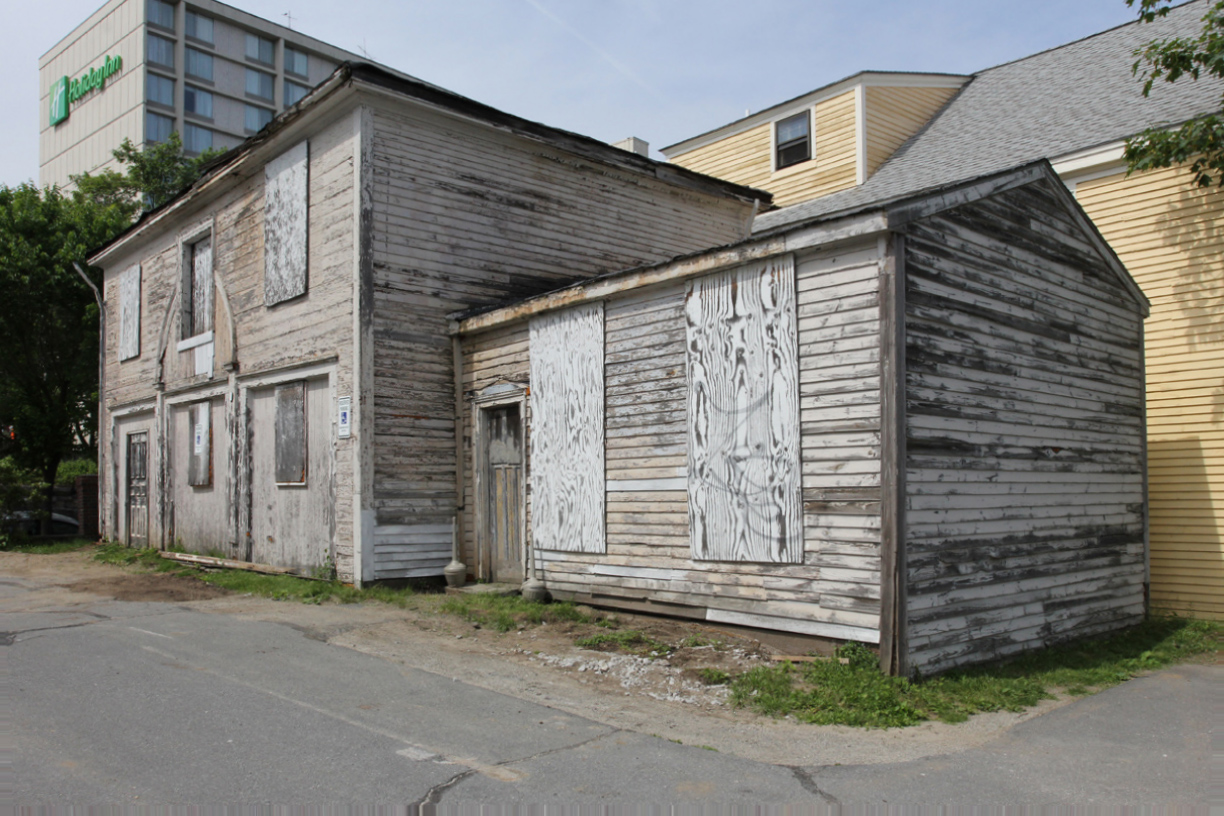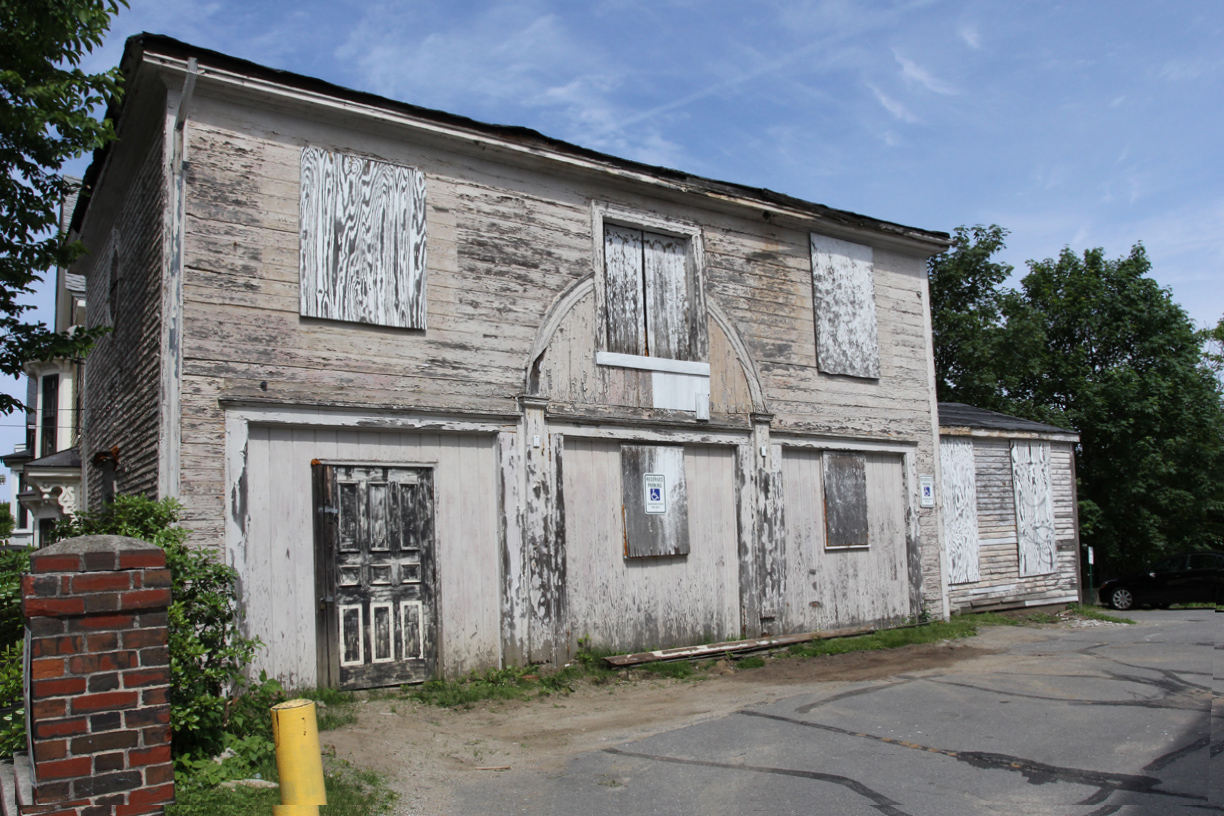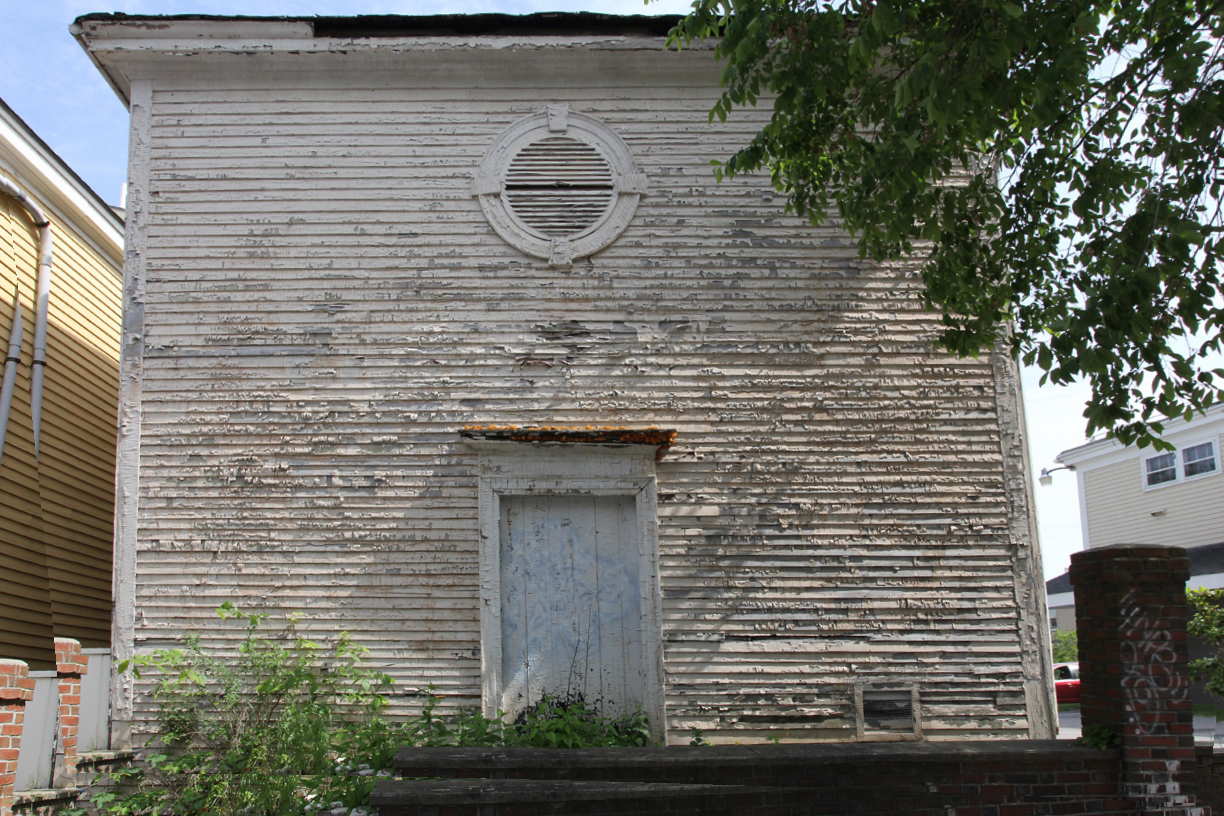Ingraham Carriage Barn
79 High Street, Portland, Maine | Nominated to Places in Peril in 2013
THE ISSUE
Built in 1800 by Elihu Deering, the Ingraham Carriage Barn at 79 High Street has a rich association with notable Portlanders, such as Captain Arthur McLellan, an officer on the privateer Retrieve in the Revolutionary War, and William Moulton, a well-known banker associated with the Cumberland Bank, and the grandson of Joseph Holt Ingraham, who laid out Portland’s State Street. The Ingraham Carriage Barn is a Federal style, timber-framed structure which retains original details and its skive-jointed clapboarding, despite having undergone multiple changes throughout its 213-year lifespan. Changes that have occurred over the years include the construction of a Greek Revival style ell by 1886, repurposing its function from a carriage barn to a garage by 1924, and then apartments by 1950, and demolition of the Greek revival ell in 1984.
The Ingraham Carriage Barn is an architectural gem that is at a tipping point: without immediate attention to preserve and rehabilitate the building, it is likely to be lost. Currently owned by Goodwill Industries of Northern New England, Inc., the Ingraham Carriage Barn is vacant and deteriorating quickly. The Ingraham Carriage Barn has been detached from its dwelling, now serving as an apartment building for Goodwill Industries’ clients. Years of neglect and lack of funding have structurally compromised the outbuilding, attracting vandalism and blight.
Our Position
Constructed in 1800, the Ingraham Carriage Barn is a rare example of an early, and now very rare, building type—the urban carriage barn. The Ingraham Carriage Barn is located within Portland’s West End Historic District and the Spring Street National Register Historic District and is noted as a significant feature of the primary, Federal style Ingraham residence at 79 High Street. The attractive location close to Portland’s Arts District and downtown provides multiple possible reuses so that it can be preserved and rehabilitated, possible as office space, art studios, housing, or other uses. The property is located in a National Register Historic District, making it potentially eligible for state and federal historic preservation tax credits. A rehabilitation project for the building could provide job training in preservation skills and bring the building back into service.
Near term, Landmarks has encouraged the owners to temporarily secure the building against fire and vandalism until a long-term solution is found. Since its listing on our Places in Peril List in 2013, Goodwill Industries of Northern New England has scraped and painted the building, adding a layer of protection for the historic wood clapboards.
Press
Portland landmarks group lists 7 historic sites in 'peril' Portland Press Herald
Quick Links
Dwelling at 71-83 High Street, Portland, 1924 Maine Memory Network
Carriage Barn at 71-83 High Street, Portland, 1924 Maine Memory Network
What You Can Do
Join our mailing list to stay informed about advocacy, educational programs, and upcoming events.
Support our advocacy efforts and our Places in Peril program by becoming a member or making a donation today.




